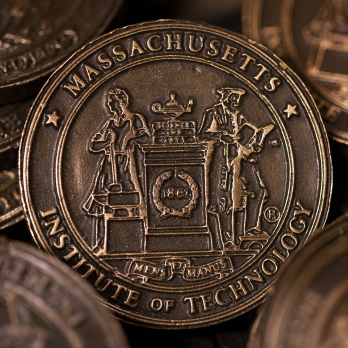History


The MIT Center for International Studies was founded in 1951 in response to the Cold War struggles between the United States and the Soviet Union.
In 1952, a young MIT economist named Max F. Millikan became the Center’s first director. During his more than 15-year tenure Millikan urged fellow CIS faculty members to become “social science entrepreneurs” — using their scholarship to help policymakers better understand and respond to international events.
The Center brought together sociologists, economists, anthropologists, political scientists, and historians to investigate communist societies and movements; the economic and political development of industrializing countries; and communication systems in both East and West. CIS members also published influential articles and over 100 books. In addition to deeply influencing foreign policy, they advocated for the expansion of the social sciences at MIT, playing an instrumental role in establishing the Department of Political Science in 1965.
While the Center’s focus has evolved in response to shifting geopolitical, economic, and environmental realities, it has remained committed to harnessing research that leads to a safer, more prosperous world.
From the Center’s inception, faculty and researchers recognized the importance of understanding newly developing countries in order to shape effective American foreign policy. They studied the economic, social, and cultural dynamics of these nations’ development, and engaged in extensive fieldwork in Italy, Indonesia, and India.
Members of the Center actively participated in congressional and executive branch debates about US foreign aid and development policies. During the 1950s, Max Millikan, Walt Rostow, and others worked with Eisenhower administration officials to promote a foreign aid policy informed by development theory. During President Kennedy’s “Decade of Development,” Millikan wrote an influential policy memorandum advocating what would later become the Peace Corps and served on the President’s Task Force on Foreign Economic Assistance. Rostow served in the State Department as head of policy planning, and Carl Kaysen was deputy national security adviser to the president. The Center published a book, The Emerging Nations, to explain the modernization policy they hoped the US would adopt. And Myron Weiner and Lucian Pye helped shape the emerging field of comparative political development.
CIS’s founders believed the complexities of the post-war world demanded collaboration and integration between the social sciences, natural sciences, and engineering. CIS’ program in International Communication and its program in Economic and Political Development, both of which incorporated technological issues into their research agendas, are two early examples of this interdisciplinary focus. And during the 1960s, scientists, engineers, and social scientists at CIS collaborated on work addressing defense and arms control questions.
From 1972 to 1987, under the directorship of Eugene Skolnikoff, a political scientist who had studied engineering and was an enthusiastic proponent of expanding CIS’s science and technology-related efforts, the groundwork was laid for a variety of other science-related projects on international issues.
While CIS is primarily a research enterprise, it has also made significant contributions to MIT and the wider world through teaching and outreach. This includes seminars, workshops, crisis simulations, publications, and programs for research associates, postdoctoral fellows, military fellows, diplomats, and national security professionals based in Washington, DC.
For decades, CIS has led some of the most rigorous research and educational programs on arms control, defense, and national and international security. In 1958, Director Millikan headed a committee on the future of social science teaching and research at MIT. One of its recommendations was that the Institute take on initiatives in defense and arms control. In 1960, Professor Lincoln Bloomfield, a former State Department official, organized graduate seminars on the use of military force, conventional weapons transfers, and arms control. The next year, Professor William Kaufmann, a former RAND defense and security analyst, joined the Center and started a defense budgeting and analysis seminar series. During the mid-1970s, Professors Jack Ruina (an electrical engineer) and George Rathjens (a chemist) organized MIT-wide seminars on nuclear weapons and arms control policy.
This led to the establishment, in 1976, of the Defense and Arms Control Studies program (DACS), which in 1996 became the MIT Security Studies Program (SSP). SSP’s mission is to train MIT students to become leading security policy analysts and conduct research on international affairs within a scientific and technological context to inform public policy. Through SSP, the Center created an ongoing community of researchers and policy analysts from numerous disciplines and backgrounds working on issues vital to national security.
Beginning in the 1980s, under the direction of Professor Suzanne Berger, CIS explored opportunities to teach emerging military officers frameworks for challenging political, cultural, and socioeconomic assumptions regarding their workplace environments. In 1986, Seminar XXI officially began with the goal of cultivating new ways of thinking for decision-makers and alternative avenues for international policy and military action.
As the Seminar has evolved, it has adapted materials on policy making approaches from several MIT graduate-level courses and provided a unique educational perspective for senior military and civilian officials. The program provides an opportunity for frank and challenging exchanges of ideas between policymakers, university scholars, and Seminar XXI Fellows, who represent a wide range of institutions and organizations in the US government.
In 1981, the MIT-Japan Program was founded by Professor Richard Samuels with the goal of creating a new generation of technologically sophisticated "Japan-aware" scientists and engineers in the U.S. MIT-Japan served as the inspiration for MISTI, the MIT International Science and Technology Initiatives, which was launched two years later by Professor Suzanne Berger.
Since its founding, MISTI has created global experiential learning opportunities for thousands of MIT students and is today considered a pioneer in applied international education.